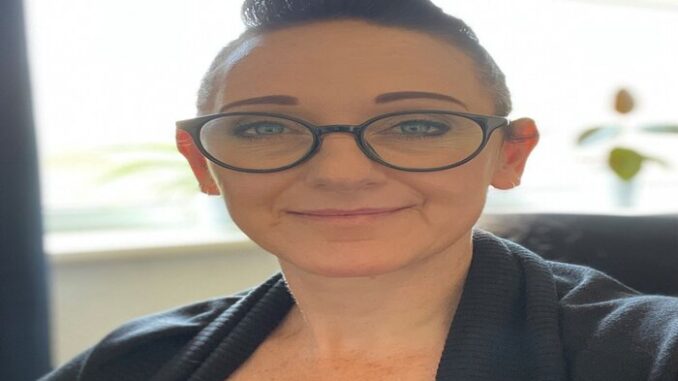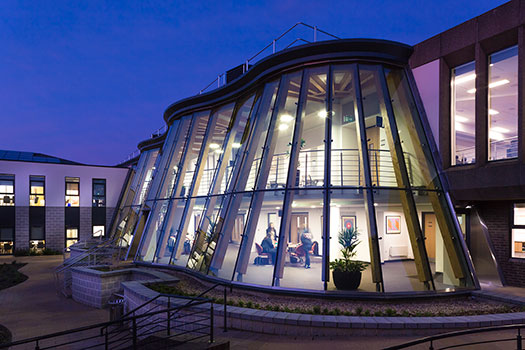
Having had the privilege of working with autistic people for over a decade, it is autistic people who sparked the realisation that I may be autistic. Listening to, and supporting them with, their experiences and difficulties resonated with me deeply and encouraged me to recognise this realisation.
I was diagnosed in January this year at the age of 46 and, although I recognised how my own strengths and difficulties fit the diagnostic criteria, common myths and misconceptions of autism only served to increase feelings of imposter syndrome while I was waiting for assessment. However, in hindsight, I can clearly recognise that, throughout my life, I have observed others to learn social skills and appropriate behaviours dependent on context. This has enabled me to camouflage and mask my difficulties and to “fit” into the neurotypical world around me.
I did not realise until my assessment that I have alexithymia. This means I fully understand the emotions I feel and can name them, but I cannot describe how those emotions make me feel. However, I do have huge amounts of both cognitive and affective empathy and believe that much of this has been learned through my years of observing social interactions. Without being able to show empathy I would not be able to work effectively in my role as a Designated Safeguarding Lead and, for some organisations, the misconception of autistic people lacking empathy could potentially have meant that I would not even be considered for such a role.
I also consider myself to have a “spiky profile”. I have a love of problem solving, am fantastic in an emergency and extremely organised, so I have been subject to being told that I’m “not that autistic”. Yet things like not having the right foods available for breakfast, running late, or an item of clothing that doesn’t feel right can have a hugely disruptive effect on my day.
The misconception that autism is linear means that the perception of being “high” or “low” functioning still persists. People believe that because I can do the things that I can, that I should also be able to do the things that I find difficult. There are also periods where I’ve felt overwhelmed to the point of barely being able to function at all, which leads to others having difficulty in understanding why I can’t even do the things that I normally do very well.
Misconceptions such as these lead to distorted perceptions of autistic individuals. Furthermore, when these faulty premises are woven into support services and societal frameworks, it becomes a systemic issue. Research that operates on the assumption of a deficit can inadvertently hinder the development of more accurate and inclusive support for autistic individuals. Only by addressing these flawed ideologies, and applying this knowledge to support services, can we direct change.
The need for tailored support
The prevalence of these myths and misconceptions has far-reaching consequences for the support and well-being of autistic individuals. Due to these prevailing beliefs that often understate individual differences, many autistic individuals are not receiving the appropriate support, tailored to their specific needs. The lack of understanding and awareness leads to delays in identification, misdiagnosis, or underdiagnosis, resulting in a situation where individuals only receive assistance when their needs have reached a crisis point.
The need for tailored support for autistic individuals was prominently showcased at the Autism Shows, held nationwide in June and July of this year. These highly attended events provided a critical platform for the autistic community to come forward and express their stories, highlighting the essentiality of personalised assistance. The Autism Shows served as a resounding reminder that every autistic person possesses unique needs and experiences that must be recognised and accommodated. It became evident that the prevailing myths and misconceptions surrounding autism have far-reaching implications, often undermining the significance of individual differences.
Early intervention and support are crucial in enabling individuals to thrive and reach their full potential. Providing timely and targeted support can empower autistic individuals to navigate the world more effectively, maximise their strength, and lead fulfilling lives. To do this, it is imperative that we challenge the misinformation and dismantle barriers to support.
Digital tools
Of course, early intervention is ideal, but this is easier said than done. With 190,000 people expected to be on the waiting list for an autism diagnosis by 2024, services are overburdened. Efforts need to be directed towards providing a more accessible solution and, importantly, the right solution.
Digital tools have the potential to revolutionise the support and care provided to autistic people, offering tailored solutions that address their unique needs. The ability to provide personalised resources is unparalleled, revealing avenues for immediate access to support when needed and delivered effectively. Clinically proven, scalable, evidence-based solutions are available and should be deployed where they may help relieve the strain on clinical services. So why hasn’t this been done already?
It boils down to an information gap regarding autism itself and approaches to support. The use of digital tools provides a unique opportunity to reach communities that are often hidden from services, like women and members of the LGBTQIA+ community. Recognising the power of technology to help people access support through self-driven referral can go a long way in providing timely access and tailored support to address the severe health inequalities faced by the autistic community.
However, this should not be viewed as a silver bullet. Making the most of technology depends upon an understanding of its limits. It needs to be a tool embedded in the kit of any service that also provides, or complements, human support. Human-backed technology is key to the delivery of impactful, practical help that puts users in control to determine their own needs. This approach to self-management can reduce the backlog and influence wider change.
The health and social care system is in need of radical change. By harnessing the power of technology, we can create a more inclusive and supportive environment, ensuring that tailored support is accessible from the early stages, preventing crises, and empowering autistic individuals to thrive.



